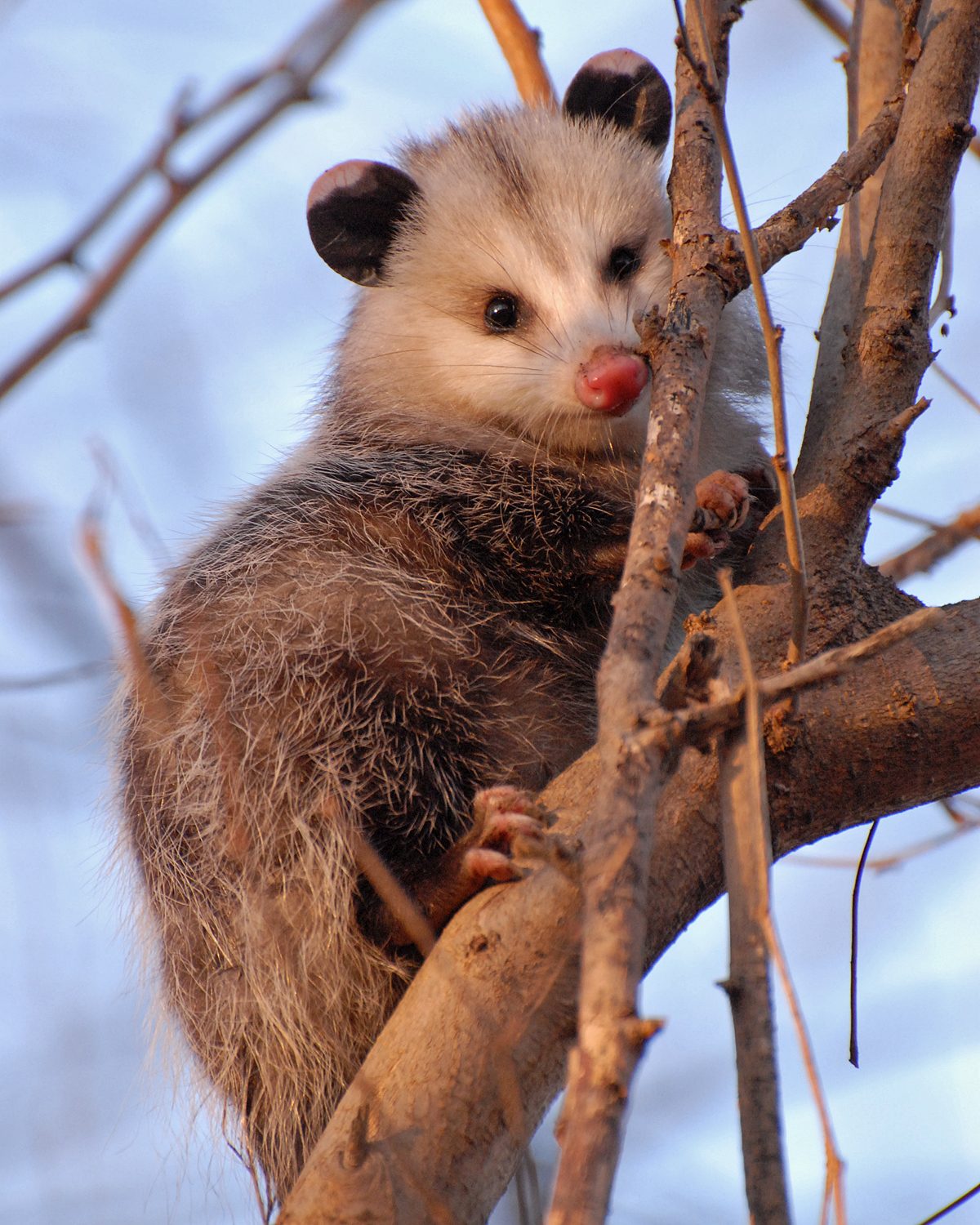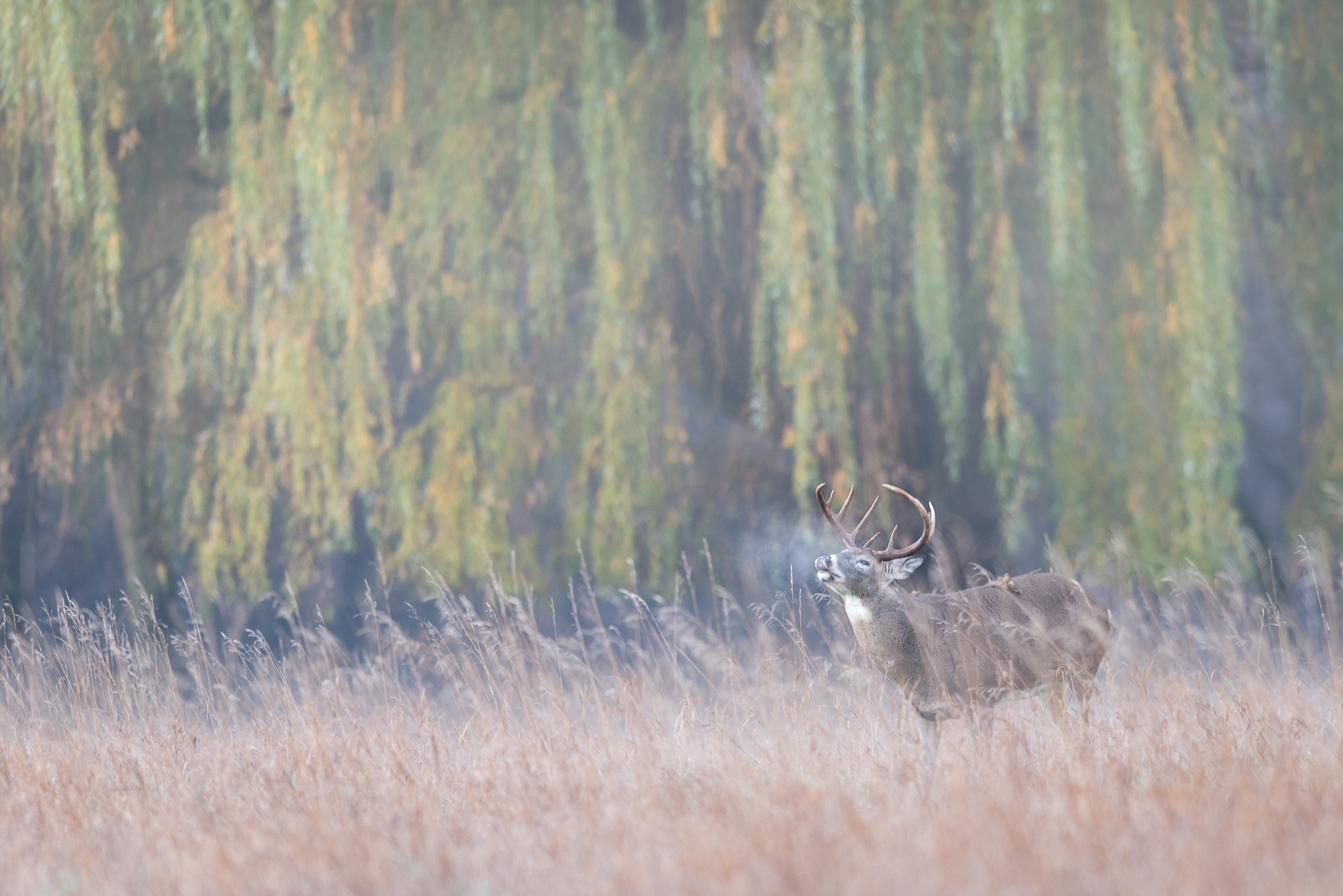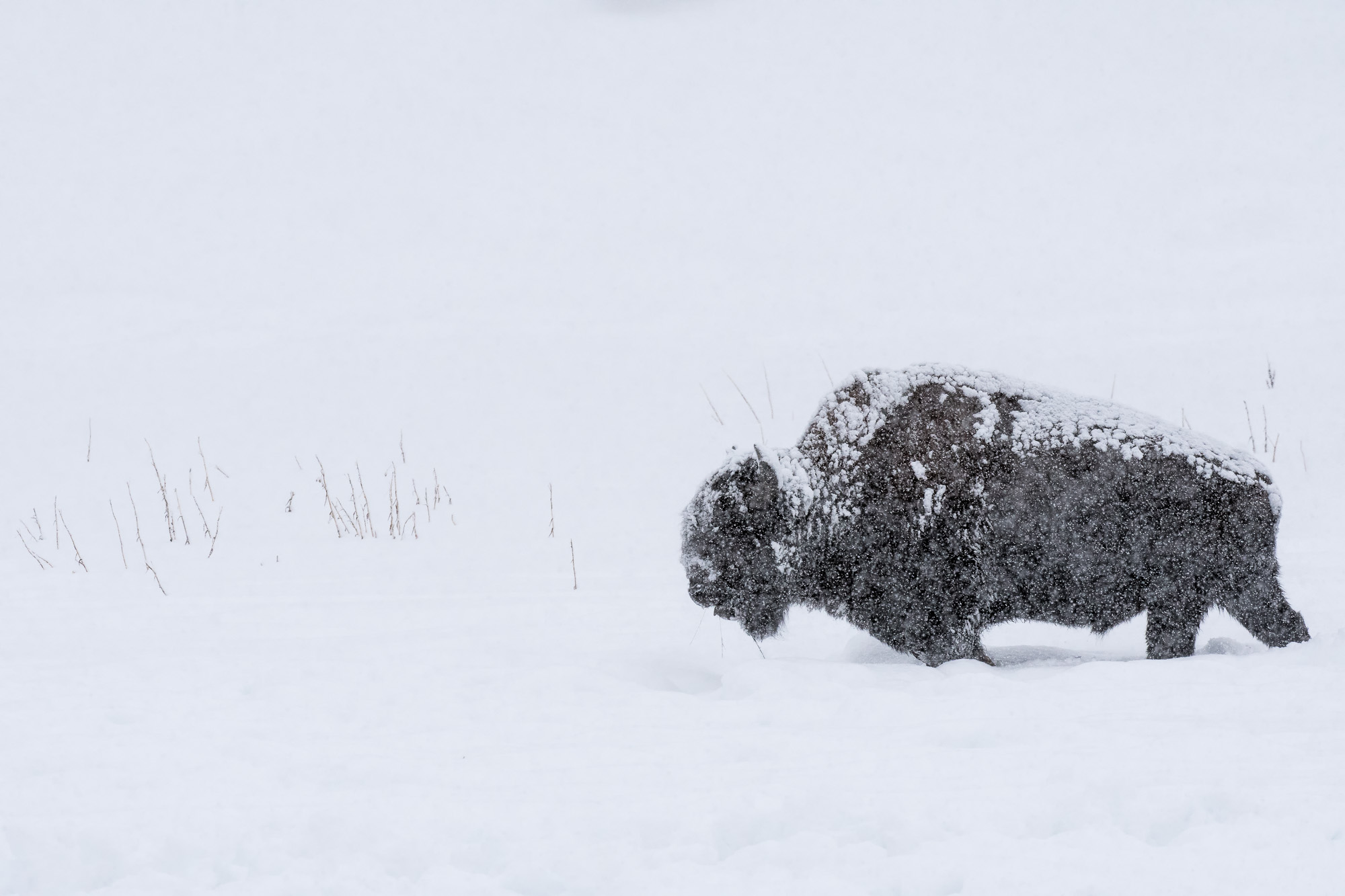American Bison
Bison bison
This prairie icon travels under a number of names: the Bison, the American Bison, or (most commonly) the Buffalo. Once, famously, its herds blackened the Great Plains, sustaining the Plains Indians who hunted them. During the late 18th century, an estimated 60 million bison roamed the middle section of North America. Then came America’s westward expansion, and the huge herds were nearly exterminated, dwindling to less than 550 animals by 1889. Strenuous conservation efforts brought the bison back from the brink, and the population has rebounded to roughly a half-million animals.
Vocalization: According to the National Park Service, bison make a variety of sounds. These sounds include anything from the low rumblings of male bellows sheard during mating season to the high-pitched bleats of a calf looking for its mother. Other common sounds consist of “snorts,” “coughs,” “roars,” and “grunts.”
**To hear an audio recording of a bison’s roar as captured by May Castelberry, visit this YouTube link. **
American Mink
Neovison vison
The American mink is a semi-aquatic animal endemic throughout much of North America. A member of the Mustelidae family, it is related to the otter, badger, marten, weasel, ferret, and wolverine, and like them is an aggressive carnivore, hunting rodents, fish, crustaceans, frogs, and birds. Male minks measure from 13 to 18 inches in body length, and weigh one to three pounds, while females usually measure from 12 to 15 inches and weigh between one and two pounds. The mink’s long streamlined body allows it to enter the burrows of prey and helps to reduce water resistance while it’s swimming.

Photo courtesy of Ken Saunders II, taken March 18, 2016, at Otter Creek Marsh Wildlife Management Area in Tama County, Iowa
Though Mustelid species vary greatly in size, minks are typically small animals with short legs, short round ears, and thick fur which tends to be various shades of tawny, from dark to light, with color very evenly distributed over the body and a white chin and lower lip.
Vocalization: The American mink has a variety of sounds in its repertoire, including screams, whining peeps, hisses, squeals, grunts, and cries, and even a sort of “quacking bark.”
**To hear an audio recording of mink vocalizations as captured by “Mink in My Home,” visit this YouTube link. **
Virginia Opossum
Didelphis virginiana
The Virginia opossum—also known as the North American opossum—is the only marsupial north of Mexico. It’s solitary, nocturnal, about the size of a house cat and all-too-familiar to many homeowners (along with the racoon) as a highly successful raider of garbage cans.
The opossum has a number of unique physical characteristics. In addition to the brooding pouch it shares in common with other marsupials, it has 50 teeth—more than any other North American land mammal—opposable, clawless thumbs on their rear limbs, and a naked, prehensile tail. The animal is thought to have evolved in South America, but migrated north during the Great American Interchange. Until recently, its range extended from Central America to the norther U.S., however climate change appears to be further extending its range into southern Canada.

Photo courtesy of Ken Saunders II, taken November 28, 2008, at Rock Creek Lake State Park in Jasper County, Iowa.
Vocalization: The opossum has a voice appropriate to its retiring nature. Opossums are mostly quiet, but if provoked will hiss or make a grinding cry of warning.
To hear an audio recording of the Virginia opossum as captured by Vladimir Bursh, visit YouTube or download the fully interactive PDF of this issue’s Mammals of the Prairie feature by using the hyperlink at the bottom of the web page.
White-tailed Deer
Odocoileus virginianus

Photo courtesy of Bruce Leventhal, taken on November 5, 2016, at Fort Snelling State Park, (St. Paul, Minnesota) adjacent to the Upper Mississippi River Valley Wildlife and Fish refuge
The white-tailed deer is widespread in the prairie region. It’s natural range stretches from Canada south through the continental U.S., Mexico, and the countries of Central and South America, down to Peru and Bolivia. The female—the doe—usually weighs under 100 lbs, but can range up to nearly 200 lbs. The male—the buck—usually weighs around 100 lbs, though specimens approaching 300 lbs have been known. Bucks are distinguished also by antlers, which they shed and regrow yearly, and use to engage other bucks in antler-to-antler pushing contests during the mating season, usually late October to early November.
On the prairie, the introduction of large-scale agriculture and the clearcutting of coniferous forests, along with the virtual extirpation of the white-tail’s natural predators, has helped its population to explode.
Vocalization: the white-tail has a repertoire of social grunts and wheezes, but reserves its loudest sounds for the mating season. During the rut, males will make a variety of grunts, wheezing snorts and groans to announce their intentions, corral does, or warn rivals.
To hear an audio recording of the White-tailed deer during the rut as
capt*ured by Jedd Edwards for The Management Advantage, visit this YouTube link.

